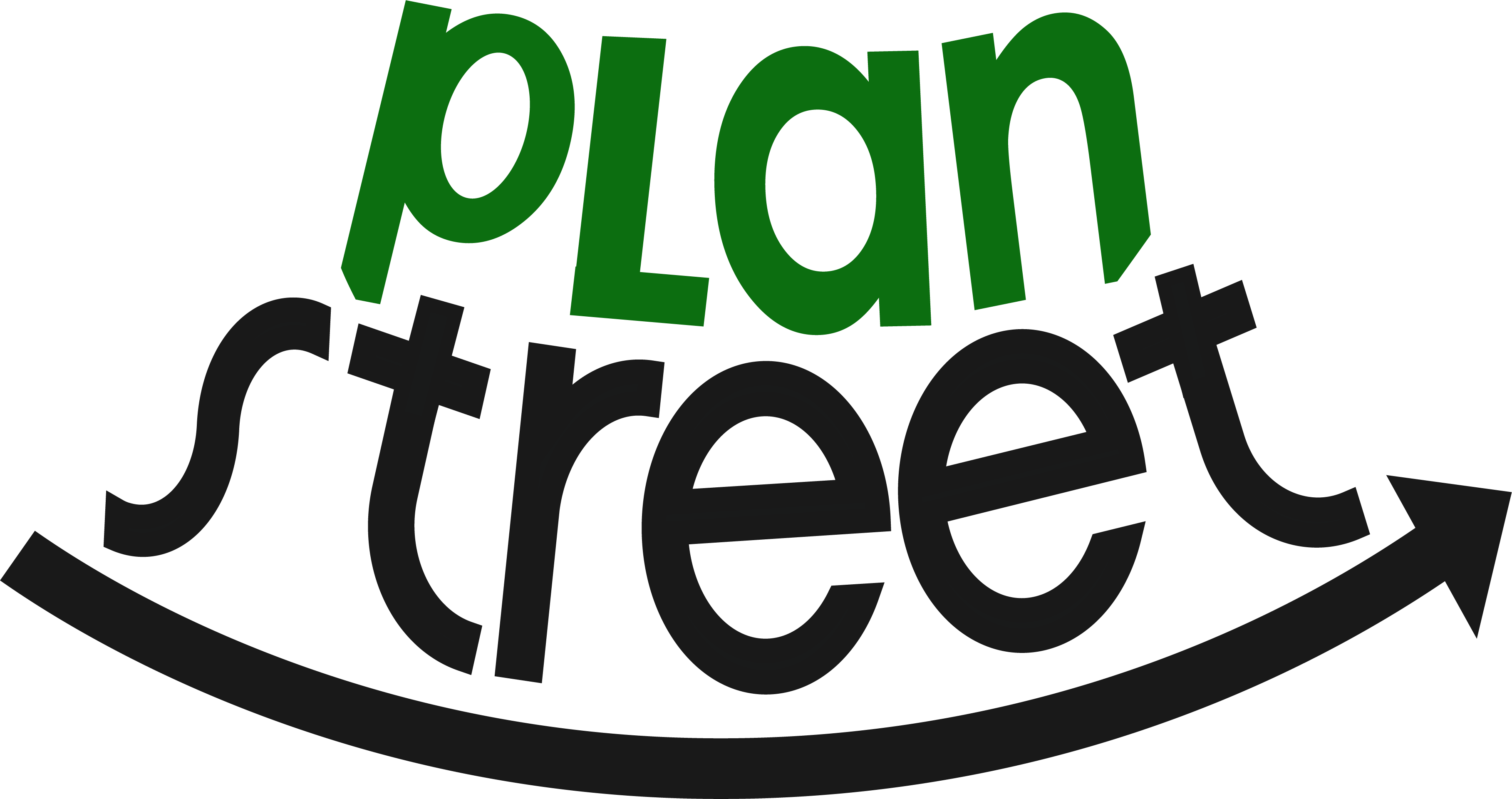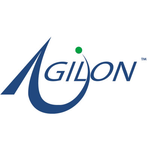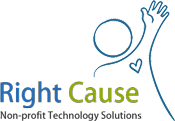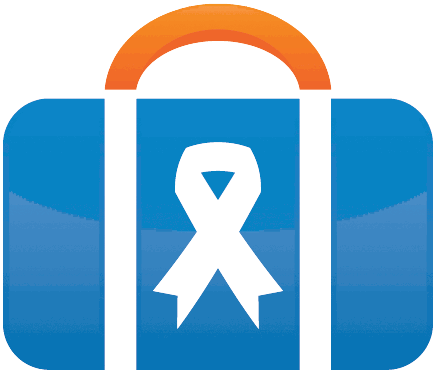What Is Nonprofit Software?
Nonprofit software refers to technology solutions that are specifically intended to meet the demands of nonprofit organizations. Nonprofits use these technologies to manage their operations, fundraising activities, donor relationships, and overall effectiveness. They intend to streamline procedures, save time and costs, and eventually contribute to the organization's mission and effect.
There are several types of nonprofit software available on the market, including donor management, volunteer management, accounting, marketing and communication, event planning, and others. Each one serves a distinct purpose and may be tailored to the organization's size, budget, and specific requirements. Nonprofit software provides a variety of capabilities to help a nonprofit improve the efficiency and effectiveness of its daily operations.
Nonprofit organizations, for example, can use donor management software to track and manage donor information, donations, and relationships. Volunteer management software facilitates volunteer recruiting, scheduling, and communication. Accounting software manages financial duties such as budgeting, spending tracking, and report generation, whereas marketing and communication software helps promote the organization's goal and events.
In addition to reducing procedures, nonprofit software assists businesses in gathering useful data and insights. These insights can help guide decision-making and improve overall performance. Many software solutions integrate with one another, resulting in a unified and centralized system for managing all areas of a nonprofit's operations. Nonprofit software benefits not only the organization's internal processes, but also donor interactions and engagement.
Nonprofits can use software to better manage and connect with donors, resulting in a more personalized and efficient experience. This can improve donor retention and support. When picking nonprofit software, it is critical to conduct research and understand your organization's specific requirements and budget. Some software solutions charge a one-time price, whilst others demand a monthly or annual subscription. It's also important to assess the software's scalability, as your firm may expand in the future.
What Are The Recent Trends In Nonprofit Software?
In recent years, the charity sector has seen an increase in the creation and use of software specifically tailored to their needs. This is primarily owing to the nonprofit industry's rapid expansion and increased complexity. Nonprofit organizations rely on technology more than ever to streamline operations, boost donor relationships, and increase impact. As a result, demand for nonprofit software is increasing, and new trends are emerging.
One key trend in nonprofit software is the shift to cloud-based solutions. These software platforms enable NGOs to store, retrieve, and manage data remotely, eliminating the need for physical gear or on-site IT staff. This not only saves time and money, but it also ensures that data is secure and available at all times from any location. Another trend gaining pace in the charity software market is the use of artificial intelligence (AI) and machine learning (ML) technologies.
These technologies are intended to automate operations like donor segmentation and communication, as well as collect data insights that may be utilized to guide fundraising strategies and program development. Furthermore, there is an increasing emphasis on data privacy and security in nonprofit software. With a surge in data breaches and cyber threats, organizations are looking for software solutions that prioritize data security.
This covers functions such as data encryption, user authentication, and safe data storage. Another noticeable development is the incorporation of social media and digital marketing features into nonprofit software. Many organizations recognize the value of social media and digital platforms for fundraising, awareness, and donor interaction.
As a result, nonprofit software is now being designed with these characteristics in mind, allowing organizations to effortlessly integrate social media marketing into their overall plan. Finally, there is an increased emphasis on donor and volunteer management in nonprofit software. These systems are intended to not only track donor donations, but also to foster and sustain connections with supporters. This contains functions such as donor and volunteer profiles, communication tools, and event management capabilities.
Benefits Of Using Nonprofit Software
Nonprofit organizations sometimes face limited resources and people, making it difficult to handle all elements of their operations properly. This is where non-profit software comes in. It is a technology solution built primarily to assist NGOs in streamlining their operations and improving their overall effectiveness.
Here are some of the main advantages of utilizing nonprofit software:
1. Cost-Effective And Time-Saving: Nonprofit software automates a variety of operations, including donor management, fundraising campaign creation, and spending tracking, resulting in considerable time and cost savings. It decreases the need for manual labor and the risk of human mistake, allowing organizations to focus on their primary objective.
2. Improved Donor Management: Nonprofits rely heavily on donor management, and nonprofit software makes it easier to collect and manage donor data such as contact information, giving history, and communication choices. This enables companies to tailor their communications and strengthen their ties with contributors.
3. Improved Fundraising Efforts: Nonprofit software includes capabilities like online fundraising platforms, email marketing, and social media integration, which can help organizations reach a larger audience and increase donations. It also includes tools for tracking and analyzing fundraising data, allowing NGOs to make more informed decisions regarding their campaigns.
4. Effective Financial Management: Nonprofit software has functionality for handling financial operations like gift processing, invoicing, and budget tracking. This enables organizations to better track their spending and revenue, ensuring transparency and responsibility to donors and stakeholders.
5. Improved Program Management: Nonprofit software can help businesses manage their programs and initiatives more effectively. It includes tools for measuring progress, managing volunteers, and interacting with team members, making it easier to meet objectives and assess impact.
6. Data-Driven Decision-Making: Nonprofit software captures and retains data on anything from donor information to program outcomes, which may be used to make informed decisions. Nonprofits can use this data to discover trends, evaluate performance, and make future data-driven decisions.
Important Factors To Consider While Purchasing Nonprofit Software?
When contemplating purchasing nonprofit software, there are numerous important elements to consider to ensure you make the best option for your organization.
These elements include functionality, cost, usability, support, and integration.
1. Functionality: The major goal of nonprofit software is to streamline and simplify numerous duties and processes in your organization. As a result, it is critical to carefully evaluate the software's functioning and establish whether it satisfies your specific requirements. Consider the features available, such as fundraising management, donor management, volunteer management, and event planning, and select software that is appropriate for your organization's goals and needs.
2. Pricing: Nonprofit software has several pricing structures, such as one-time fees, subscription plans, and add-on costs. Before making a purchase, you should have a clear grasp of your budget and check pricing from several providers. Be aware of hidden fees, and make sure the software's pricing matches your organization's financial resources.
3. Usability: Nonprofit software is only useful if it is user-friendly and easy to implement by your staff. Look for software that has a simple and intuitive interface, requires little training, and is accessible to all users. Consider the software's scalability and whether it can grow with your organization's evolving needs.
4. Support: Investing in reputable nonprofit software ensures you have access to dependable customer service whenever you need it. Before making a purchase, look at the software vendor's customer service options, including phone assistance, email help, and live chat. You can also read internet reviews to obtain a sense of the vendor's responsiveness and effectiveness in resolving difficulties.
5. Integration: Nonprofit software should not be utilized in isolation; rather, it should work smoothly with your existing systems. Before making a purchase, make sure the software is compatible with the other tools and platforms used by your firm. This will avoid compatibility issues and ensure seamless running. When choosing nonprofit software for your organization, keep these crucial factors in mind to make an informed purchase. Remember to conduct extensive study and compare many possibilities to choose the greatest fit for your individual requirements and budget.
What Are The Key Features To Look For In Nonprofit Software?
When looking for nonprofit software, there are numerous critical elements to examine to ensure that it fulfills your organization's unique goals and expectations. These features should not only streamline your operations and increase productivity, but also assist you in achieving your objective and better serving your community.
The following are the key features to look for while evaluating nonprofit software:
1. Donor Management: The capacity to manage and track donations is critical for any nonprofit organization. Look for software that allows you to conveniently store and organize donor data, track donations and commitments, and generate individual donor profiles.
2. Fundraising Tools: Nonprofits rely largely on fundraising to secure financial support. To assist you meet your fundraising objectives, the ideal software should have a number of fundraising tools such as online donation forms, peer-to-peer fundraising, and event management.
3. Volunteer Management: Many charitable organizations rely on volunteers to help them carry out their missions. Look for tools that can help you manage volunteer schedules, measure volunteer hours, and communicate with volunteers more effectively.
4. Accounting And Financial Management: Nonprofits must accurately track and disclose their finances in order to ensure transparency and accountability. To simplify your financial management, go for software that includes budget tracking, cost management, and accounting interfaces.
5. Communication And Marketing: Nonprofits must communicate effectively with their supporters and stakeholders in order to raise awareness and engage the community. Look for software that includes email marketing, social media integration, and communication capabilities to help you reach and engage your target audience.
6. Grant Management: If your business relies on grants for funding, make sure the software you chose includes grant management capabilities. This includes managing grant deadlines, developing grant bids, and keeping track of reporting requirements.
7. Reporting And Analytics: In order to make data-driven decisions, organizations must have access to analytics and reporting tools. Look for software that allows you to create customized reports and dashboards to track progress and measure effect. By taking into account these crucial aspects, you may choose nonprofit software that will help you streamline your operations, boost efficiency, and, ultimately, have a greater influence on your community. Make careful to properly explore various software solutions before selecting the one that best matches your nonprofit's specific needs and goals.
Why Do Businesses Need Nonprofit Software?
Nonprofits play an important role in society by tackling social, environmental, and economic concerns. Nonprofits, like any business, require efficient and effective tools to function and fulfill their objectives. This is where non-profit software comes in. Nonprofit software is specifically developed to meet the unique demands of nonprofit organizations by streamlining operations, managing donations, and engaging with contributors and volunteers.
It includes a variety of features and functionality that can greatly benefit a nonprofit, such as donor management, fundraising, financial administration, and communication tools. One of the primary reasons that businesses want nonprofit software is to maximize their fundraising efforts. Nonprofit software enables organizations to conveniently collect and manage donations, identify high-value donors, and launch focused fundraising efforts.
This not only saves time and resources, but also raises the likelihood of receiving additional financing. Furthermore, nonprofit software enables organizations to successfully manage their programs and projects. It includes tools for project planning, budget tracking, and progress monitoring, allowing companies to make better use of their resources and assess their impact.
This not only improves the efficiency of nonprofit initiatives, but also allows them to demonstrate their effectiveness to donors and stakeholders. Nonprofit software also has a significant impact on donor engagement and communication. It allows NGOs to keep a database of contributors and volunteers, track their interactions and gifts, and send targeted communications.
This strengthens relationships with sponsors and develops a sense of community inside the organization. Nonprofit software can also help organizations deal with legal and financial rules, such as handling tax-exempt status and donor records. It also provides powerful reporting and analytics tools, allowing NGOs to monitor success, identify areas for improvement, and make data-driven decisions.
How Much Time Is Required To Implement Nonprofit Software?
The time necessary to deploy nonprofit software can vary based on a number of factors, including the size of your organization, the complexity of your operations, and the exact features and functionalities of the software you select. Nonprofit software implementation, on average, can take anything from a few weeks to a few months. One of the most important elements influencing the installation timeline is your organization's readiness to accept new software.
This comprises a thorough grasp of your organization's goals and operations, as well as a dedicated staff to oversee the implementation process. Another crucial consideration is the extent of modification required to ensure that the program meets your organization's specific requirements. If the software requires extensive customisation, this can increase the entire implementation time. Furthermore, staff training and onboarding are critical components of the implementation timetable.
Employees must receive enough training and assistance in order to use the new software properly and adapt to the changes. Furthermore, it is critical to recognize that the successful adoption of nonprofit software is an ongoing activity. This implies that even after the first implementation is complete, the software may require ongoing updates, training, and fine-tuning to guarantee it fits your organization's changing requirements.
What Is The Level Of Customization Available In Nonprofit Software?
When it comes to selecting the best software for your charity organization, the level of customization offered is a critical issue. Nonprofit software can range from basic off-the-shelf solutions to fully configurable platforms that can be tailored to your organization's specific needs. Off-the-shelf nonprofit software often has limited customization options because it is meant to fulfill the needs of a wide range of charitable organizations.
This could offer simple functionality like donor management, event registration, and volunteer monitoring. While these solutions may be appropriate for smaller NGOs with basic requirements, they may not be the most efficient or effective option for larger or more sophisticated organizations. For those seeking further freedom and control, nonprofit software choices with greater customization are available.
These platforms frequently provide a variety of tools and features that can be customized to meet your organization's specific needs. This may include the ability to create custom fields, workflows, and reports, as well as interact with other software or systems. It is critical to thoroughly assess the level of customization provided by each software choice and how it corresponds with your organization's goals and processes. Look for software that not only satisfies your current requirements, but also has the possibility for expansion and flexibility as your firm grows.
In addition to considering the customization choices, evaluate the level of technical expertise and assistance required to implement and maintain the program. Customization may necessitate additional training and assistance from the software source, so incorporate this into your decision-making process. Finally, the level of flexibility offered in nonprofit software can have a significant impact on its capacity to fulfill your organization's unique requirements. Take the time to conduct extensive study and analyze many possibilities to determine the greatest fit for your nonprofit.
Which Industries Can Benefit The Most From Nonprofit Software?
Nonprofit software can transform organizations of all sizes and sorts. However, certain businesses can gain even more from its characteristics and capabilities.
In this buyer's guide, we'll look at the top industries that can gain the most from employing nonprofit software.
1. Non-Profit Organizations: Nonprofit software can undoubtedly benefit the nonprofit sector significantly. These organizations have unique demands and requirements that differ from for-profit businesses. Nonprofit software can help nonprofits better manage donations, volunteers, events, communication, and donor relations, allowing them to focus on their mission and have a greater impact.
2. Education: Nonprofit software can assist educational organizations like schools, universities, and online learning platforms. These organizations frequently rely on donations and grants to support their programs and operations. Nonprofit software offers powerful fundraising and donor management capabilities that assist educational institutions track donations and manage relationships with potential contributors, allowing them to obtain the cash they need to promote student success.
3. Healthcare: The healthcare business can also benefit substantially from nonprofit software. Nonprofit healthcare organizations frequently rely on charitable donations to offer medical care to underserved regions. Nonprofit software helps healthcare organizations manage grant applications, track donations, and streamline communication with donors, making it easier to get the finances they need to operate.
4. Environmental & Conservation: Nonprofit software can help organizations protect the environment and conserve natural resources. These groups rely largely on fundraising and donor management to carry out their conservation work. Nonprofit software includes features like online contribution tools, event management, and volunteer management, which help environmental and conservation organizations create awareness and receive donations for their cause.
5. Social Services: Nonprofit software can help homeless shelters, food banks, and disaster assistance organizations. These groups frequently rely on donations and volunteers to help those in need. Nonprofit software includes capabilities such as online volunteering and donation management, allowing social service companies to communicate with potential contributors and manage their resources more effectively.
Conclusion
To summarize, selecting the correct nonprofit software can have a huge impact on the success and efficiency of your organization. Before making a purchase, you should carefully examine your wants and goals, consider your budget and resources, and conduct extensive research on viable solutions. Compatibility with your existing systems, user-friendliness, feature set, and customer support are all important factors to consider when buying nonprofit software.
It is also advisable to acquire suggestions from other non-profit organizations and read evaluations from credible sources. Remember that investing in nonprofit software is an investment in your organization's future. By choosing the proper software, you may simplify operations, improve communication and cooperation, and ultimately increase your effect on your cause.
We hope our buyer's guide has provided useful information and help in selecting the finest nonprofit software for your organization. By following these guidelines and properly evaluating your options, you will be well on your way to identifying the ideal software solution to support your mission and propel your firm forward. So, take the next step and make an informed selection that will help your nonprofit both now and in the future.






















